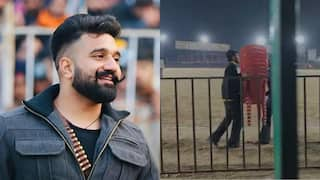Breast Cancer: Early Detection Is Key, Know Symptoms That Tell It's Time For A Screening
Early detection is crucial for successful treatment of breast cancer. Screening methods include mammograms, MRIs, and self-examinations. Timely intervention can lead to complete recovery.

By Dr Surender Kumar Dabas
Breast cancer is the most common cancer in the world. Every 4th cancer patient in women is a breast cancer patient. Also, one in every 8th woman will develop breast cancer in her lifetime.
Although the prevalence of breast cancer is so high, and subsequently mortality and morbidity are also high, breast cancer is a highly curable disease if detected in an early stage. There are many effective screening methods for early detection of breast cancer. October has been declared as "Breast Cancer awareness month" to increase awareness among the general population about breast cancer early detection and treatment.
There are various factors causing breast cancer — genetic, familiar, hormonal, and environmental.
Breast Cancer Facts
- About 5-10% breast cancers are hereditary.
- Tumour suppressor BRCA 1 and 2 genes are responsible for hereditary breast cancer. Women with either BRCA 1 or BRCA 2 have about 87% risk of developing breast cancer and 50% risk of developing ovarian cancer in her lifetime.
- A woman whose mother or sister had breast cancer will have about 1.5 - 3% more risk of developing breast cancer.
What Are The Common Symptoms Of Breast Cancer?
There are various methods for early detection of breast cancer. A patient must see a doctor immediately afterat the onset of symptoms.
The common symptoms of breast cancer include:
- Lump in the breast or armpit
- Retraction of nipple
- Nipple discharge
Screening is required for detection of the cancer, and screening mammogram is the most common method accepted worldwide. Screening mammogram is done every year starting at 40 years of age in normal risk women. In some countries, it is started at 45 years of age. After 55 years of age, it can be done every 2 years.
In women with high risk of breast cancer like BRCA 1 or 2, screening mammogram is started at 30 years of age. Women with family history of breast cancer, screening is started earlier than the age at which the family member developed cancer.
A patient with the symptoms listed above is usually evaluated with mammogram followed by biopsy. Sometimes ultrasound or MRI breast maybe required.
For staging, CT scan chest and abdomen or whole-body PET CT scan is required.
MRI Breast is also sometimes used for screening in high-risk patients or women with dense breasts.
Women can also learn and do monthly self-examination of the breast. In self-examination, she needs to stand in front of mirror and check for any change in either breast or nipple, redness or lump in the breast or nipple discharge. She also has to palpate both breast one by one in circular motion to detect any lump. If any of the findings are positive, she should immediately consult an oncologist.
Treatment Of Breast Cancer
The treatment of breast cancer consists of 3 modalities — surgery, chemotherapy, and radiation therapy.
Surgery can be either partial breast removal or BCS (Breast conservative surgery) or full breast removal, which is called mastectomy. After partial removal, often reconstruction is done with local breast tissue mobilisation called oncoplasty or by local flap. After mastectomy also, breast reconstruction can be done, either at the time of breast removal or later after treatment is complete.
Chemotherapy is given both prior to or after surgery — neoadjuvant chemotherapy is given before surgery, while adjuvant chemotherapy is given after surgery. It is decided based upon the stage of the cancer, and the hormone status of the tumour.
Radiation is usually given after surgery, and once chemotherapy is completed.
In hormone sensitive breast cancer patients, hormone tablets are given for upto 5-10 years.
Early detection with self-examination, screening mammogram, MRI breast and biopsy and consultation with oncologist for any lump or nipple discharge can help a patient to be cured completely with timely treatment and live a healthy and disease-free life.
Dr Surender Kumar Dabas is Vice Chairman, Oncology & Chief Robotic Surgery , Max Super Speciality Hospital, Shalimar Bagh.
[Disclaimer: The information provided in the article, including treatment suggestions shared by doctors, is intended for general informational purposes only. It is not a substitute for professional medical advice, diagnosis, or treatment. Always seek the advice of your physician or other qualified healthcare provider with any questions you may have regarding a medical condition.]
Check out below Health Tools-
Calculate Your Body Mass Index ( BMI )






































